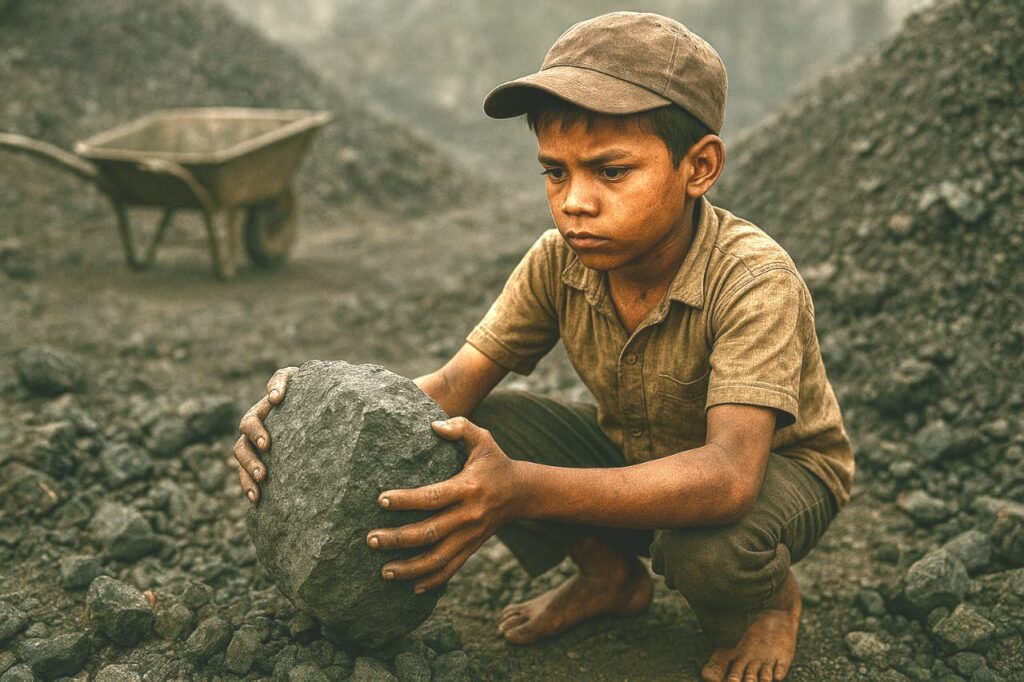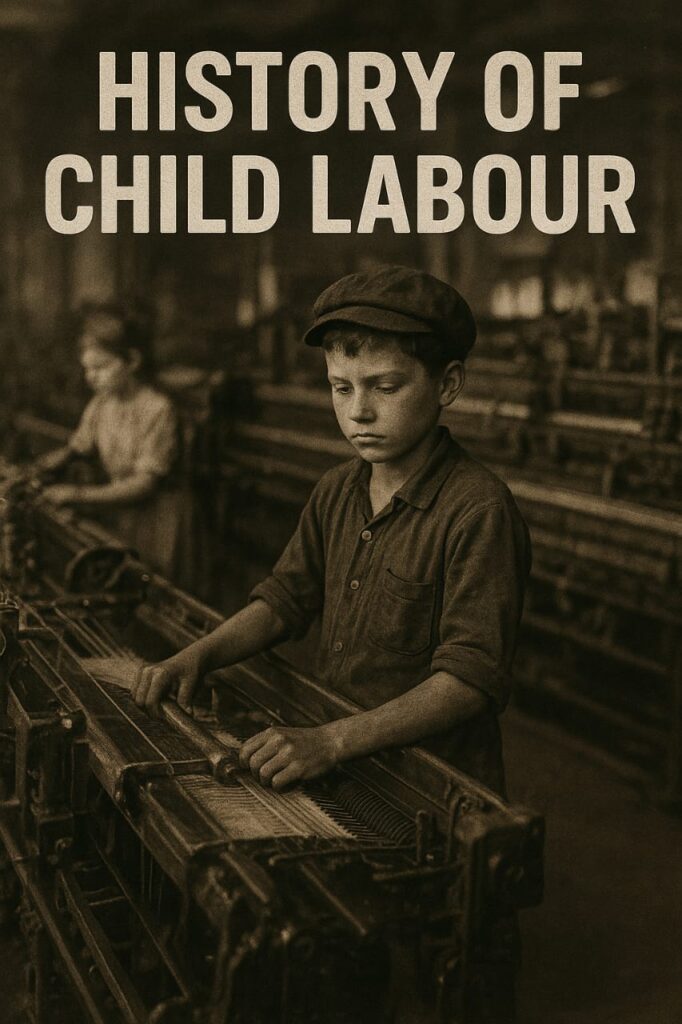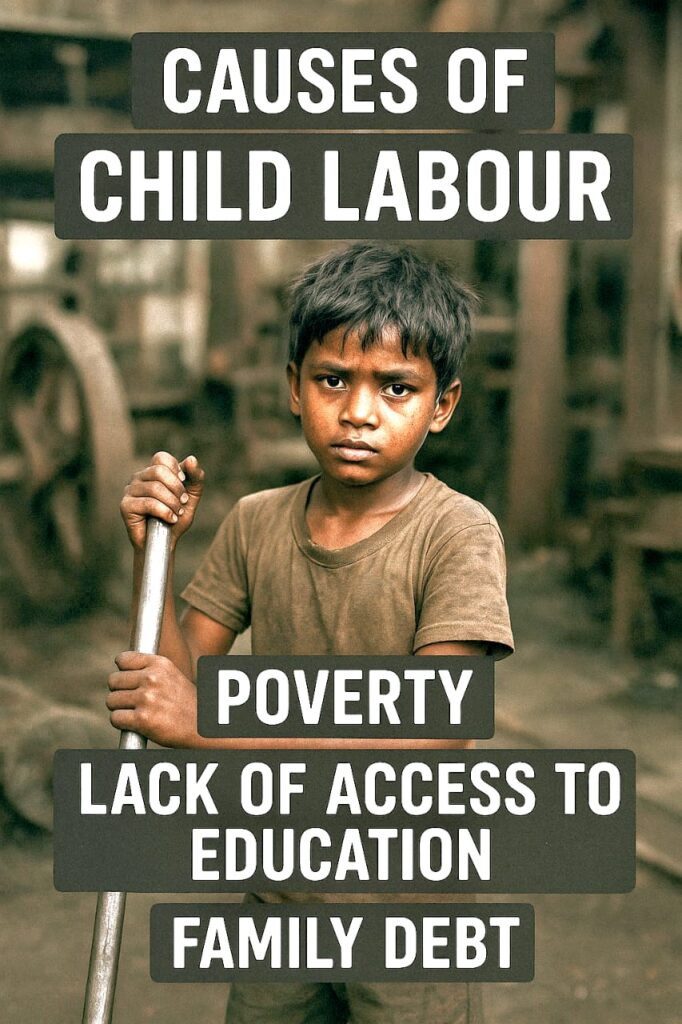According to the International Labour Organization (ILO), child labour refers to work that is mentally, physically, socially, or morally harmful to children and disrupts their schooling. This includes depriving children of the opportunity to attend school, taking away their childhood, their potential, and their dignity, and harming their physical and mental development. People commonly define child labor as work that deprives children of their potential, their childhood, and their dignity, and that harms their physical and mental growth. It includes work that endangers children in any way—mentally, physically, socially, or morally—and interferes with their education by preventing them from attending school, forcing them to leave school permanently, or making them work excessively long and hard hours while still going to school.

The worst forms of child labour involve enslaving children, separating them from their families, exposing them to serious risks and illnesses, and leaving them without support on the streets of big cities, often at a very young age.
Whether a particular kind of work is considered child labor depends on the child’s age, the type and length of work, the working conditions, and the goals of each country.
Read about Air Pollution
According to UNICEF:
- The International Labour Organization has been working to reduce child labor, with global estimates published in Geneva in 2013, covering the period from 2000 to 2012.
- The United Nations General Assembly adopted the Convention on the Rights of the Child on 20 November 1959.
International Labour Organization Convention No. 182 defines the worst forms of child labour as all forms of slavery or practices similar to slavery, such as the sale and trafficking of children, debt bondage, serfdom, forced or compulsory labour, including the recruitment of children for military use, and the use, procurement, or offering of a child for prostitution, pornography, or pornographic performances.
Understanding the root causes of child labor and addressing their interconnectedness is central to the UNICEF approach in prevention and response.
It is important to take effective action against child labor that fully addresses the various vulnerabilities children face, and to recognize that current response strategies may not fully tackle these broader issues.
History of child labour

Child labour has existed in different forms throughout history. During the 19th and early 20th centuries, many children between the ages of five and fourteen from poor families worked in Western nations and their colonies. These children mainly worked in agriculture, home-based assembly operations, factories, mining, and services such as selling newspapers, often working long hours, including night shifts lasting twelve hours. With higher household incomes, the availability of schools, and the introduction of child labour laws, the number of children in child labor has decreased.
In the world’s poorest countries, about one in four children engage in child labour, with sub-Saharan Africa having the highest number.
In 2017, four African nations—Mali, Benin, Chad, and Guinea-Bissau—had more than 50 percent of children aged five to fourteen working.
Globally, the proportion of children in child labor dropped from 25 percent to 10 percent between 1960 and 2003, according to the World Bank.
However, the total number of child labourers remains high, with UNICEF and the ILO estimating that around 168 million children aged five to seventeen were involved in child labour worldwide in 2013.
World Day Against Child Labour
The World Day Against Child Labor is an international holiday sanctioned by the International Labor Organization (ILO), launched in 2002.
It aims to raise awareness and encourage activism to prevent child labor, inspired by the ratification of ILO Conventions No. 138 on the minimum age for employment and No. 182 on the worst forms of child labor.
This day is observed every year on June 12 and is meant to support the global movement against all forms of child labour.
The ILO, which oversees the world of work, launched the World Day Against Child Labour in 2002 to bring attention to and mobilize efforts against child labor.
This day brings together governments, local authorities, civil society, workers’ and employers’ organizations to highlight the issue of child labor and set guidelines to help those affected.
According to ILO data, work that prevents hundreds of millions of children around the world from receiving adequate education, health, leisure, and basic freedoms involves them, thereby violating their rights.
Read about Short essay on important topics
Types of child labour
1. Firstly, child labour exists due to poverty, Child labour in agriculture.
2. Child labour and armed conflict.
3. Commercial sexual exploitation of children.
4. Child labour and domestic work.
5. Migration and child labour.
6. Mining and quarrying.
7. Safe work for youth.
8. Trafficking in children.
9. Deep fishing
10. Glass Factory
Effects of Child Labour
Child labour has severe effects on a child’s physical, mental, and emotional growth. Firstly, children who work at a young age often suffer from fatigue, malnutrition, and other serious health issues due to unsafe working conditions. Moreover, they are deprived of education, which limits their ability to build a better future. According to the World Health Organization (WHO), continuous labour during childhood can lead to long-term physical and psychological damage. Therefore, child labour not only destroys individual potential but also slows down the social and economic development of a nation. Children forced into labour are at greater risk of malnutrition, poor health, and even death.
They do not receive enough or proper nutrition, which increases their risk of getting sick. Good nutrition is essential for a properly functioning immune system.
Cause of child labour

1. Poverty and unemployment levels are high.
2. Access to compulsory
3. Existing laws or codes of conduct are often violated
4. Workers right are repressed
5. National laws often include exemptions
6. The global economy intensifies the effects of some factors.
Child Labour in India
Child labour prevents children from acquiring the skills and education needed for decent work as adults.
Inequality, limited educational opportunities, slow demographic changes, traditions, and cultural expectations all contribute to the continued presence of child labour in India. Factors such as age, sex, ethnicity, caste, and poverty influence the type and intensity of work that children perform. Agriculture and the informal sector remain the most common areas where children end up working.
In India, census data from 2011 shows that there are 10.1 million working children between the ages of five and fourteen.
The total child population in India in this age group is 259.6 million, meaning that 10.1 million (3.9 percent of the total child population) are working either as main workers or as marginal workers. In addition, more than 42.7 million children in India are out of school.
Solution for the Problem:
The issue of child labor presents a significant challenge to the Indian Government.
It is crucial for the government to take timely and effective actions to address this problem before it becomes too difficult to handle. Child labor is a complex socio-economic issue, often linked to poverty. Over the years, the Government of India has made several efforts to address the needs and rights of children involved in this practice.
In 1979, the government formed the Gurupadaswamy Committee to examine the issue of child labour.
The committee recommended a ban on child labour, leading to the enactment of the Child Labour Act in 1986. This act prohibits children from engaging in certain dangerous occupations. Later, the government introduced a more comprehensive approach with the National Policy on Child Labour in 1979, which focuses on gradual reform and the rehabilitation of children. Following this policy, the government developed an action plan to tackle this harmful practice.
The government has implemented various initiatives aimed at protecting and benefiting children. Since poverty is a major cause of child labour, the Government has introduced several poverty alleviation measures and employment generation schemes. However, strict laws can reduce its causes. In addition, awareness programs can bring change.
Conclusion…
Children are the future of the nation. Therefore, education should be a priority for every child. They need love, care, security, and support to grow properly. When given proper education and values, they can flourish and contribute positively to society. However, some children are forced to work at a very young age. They lose their childhood and are subjected to hard and dangerous labour just to survive. Factory owners, restaurant managers, and other employers often exploit these children, depriving them of a better future.
The main causes behind this situation are ignorance, poverty, and illiteracy.
These children are often taken advantage of because of their innocence and helplessness. Their present is unclear, and their future seems hopeless. Simply creating laws is not enough to change their fate. It is essential for authorities to strictly enforce these laws and impose strong penalties on those who exploit children. Such penalties should act as a deterrent to prevent others from engaging in this cruel practice.
Child labour is a serious issue in today’s world that not only harms the lives of millions of innocent children but also affects the economy, families, and trade.
It is closely linked to poverty and has far-reaching consequences for society as a whole.
